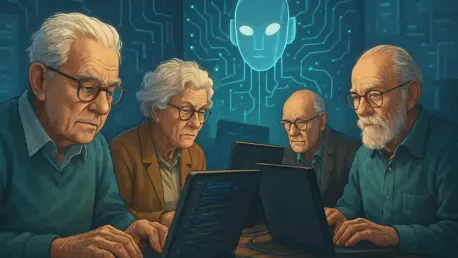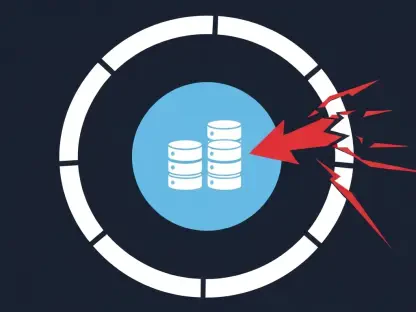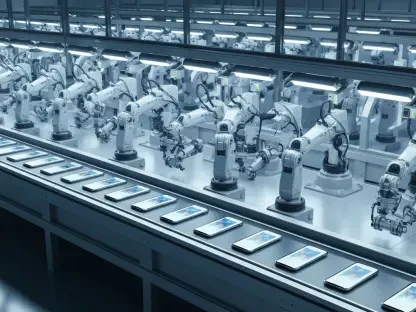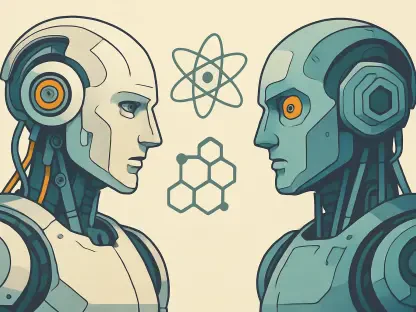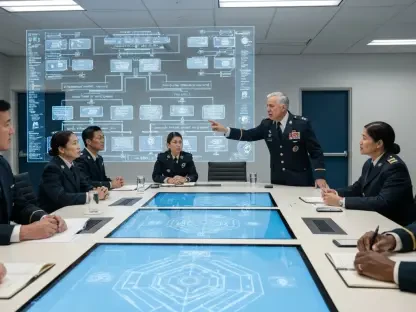What if the most experienced minds in software development are the ones driving the biggest technological shift of the decade? A striking trend has emerged in 2025, revealing that senior developers—those with over a decade of expertise—are adopting AI-assisted coding tools at an astonishing pace, far from resisting change. These seasoned professionals are leveraging automation to redefine productivity, leaving many to wonder how this impacts the industry’s future. This unexpected embrace of AI by veteran coders sets the stage for a deeper exploration of generational divides and evolving practices in coding.
The significance of this shift cannot be overstated. With software development facing mounting pressure to deliver faster, more efficient solutions while addressing sustainability concerns, the way different generations of coders adopt AI tools reflects broader industry challenges. Understanding how experience shapes technology integration offers critical insights into balancing innovation with responsibility, a dynamic that affects not just developers but businesses and society at large. This narrative dives into the data, voices, and strategies that illuminate the role of senior coders in spearheading the AI revolution.
Why Veteran Programmers Are Adopting AI Tools Rapidly
Senior developers, often assumed to favor traditional methods, are integrating AI tools into their workflows at a surprising rate. Data from a recent survey by a leading cloud services platform shows that about one-third of these coders, with over ten years of experience, now produce more than half of their work using AI. This statistic starkly contrasts with their junior counterparts, highlighting a readiness among veterans to embrace automation as a means to enhance their output.
Several factors fuel this rapid adoption among experienced programmers. Many have spent years navigating complex projects and tight deadlines, making them quick to recognize AI’s potential to streamline repetitive tasks and accelerate delivery. Their deep understanding of coding principles allows them to trust AI for efficiency while maintaining a critical eye on the results, ensuring quality isn’t sacrificed for speed.
This trend also reflects a pragmatic mindset shaped by years in the field. Senior coders often juggle multiple roles—coding, mentoring, and architecting systems—leaving little room for resistance to tools that lighten the load. Their willingness to adapt signals a broader shift in the industry, where experience doesn’t equate to stagnation but rather to strategic innovation.
The Generational Divide in Coding and Its Current Impact
A clear split exists between senior and junior developers in their approach to AI, and this divide carries significant implications for the software development landscape. While veterans lean on automation to meet escalating demands for speed, younger coders often prioritize manual methods to build foundational skills. This difference isn’t merely stylistic—it mirrors a tension between immediate efficiency and long-term learning in an industry racing toward innovation.
The stakes of this divide are amplified by external pressures shaping software development in 2025. Businesses increasingly demand rapid deployment of applications, pushing developers to adopt tools that cut time without cutting corners. Simultaneously, the environmental footprint of software, from energy-intensive data centers to AI model training, has become a pressing concern, adding another layer of complexity to how coders of all levels approach their craft.
Understanding these generational differences is essential for navigating the future of coding. Senior developers’ embrace of AI may drive short-term gains in productivity, but the slower adoption by juniors suggests a need for balance—ensuring that the rush toward automation doesn’t erode the critical thinking and problem-solving skills that define a coder’s expertise. This dynamic shapes not just individual careers but the sustainability of the tech ecosystem as a whole.
How Experience Influences AI Adoption Trends
Diving into specific behaviors, the contrast between senior and junior developers’ use of AI tools reveals distinct priorities shaped by experience. Among seasoned coders, over half report that AI significantly speeds up software delivery, allowing them to handle larger workloads with ease. However, they remain diligent, often spending considerable time reviewing machine-generated code to catch errors and maintain high standards.
Junior developers, on the other hand, show less enthusiasm for AI as a productivity booster, with fewer than half citing faster delivery as a benefit. Many prefer hands-on coding to solidify their understanding of core concepts, viewing automation as a potential shortcut that might hinder learning. This cautious stance underscores a commitment to mastering the craft before leaning on technology, a perspective that could prove invaluable as they gain experience.
Beyond productivity, awareness of broader implications also varies by generation. A notable 80% of senior coders factor in the energy costs of their work, reflecting a mature grasp of software’s environmental impact, while only about half of juniors share this concern. These disparities paint a picture of an evolving field where experience not only dictates tool usage but also shapes responsibility toward sustainable practices.
Insights from Coders: AI’s Role in Modern Programming
Voices from the coding community add depth to the data, offering a glimpse into how AI transforms the developer experience. Austin Spires, a senior director of developer engagement at a prominent cloud platform, observes that AI rekindles passion for programming among veteran coders by enabling rapid prototyping. This return to the creative thrill of early career days highlights automation’s potential to make work not just faster but also more fulfilling.
Survey results further reinforce this sentiment across experience levels, with over 70% of developers reporting that coding feels more enjoyable with AI assistance. More than 30% even describe this boost in satisfaction as significant, suggesting that automation transcends mere efficiency to enhance the human side of programming. Such widespread positivity points to AI’s unifying impact, despite differing adoption rates.
Spires also sheds light on the mindset of younger coders, praising their focus on manual methods as a sign of dedication to building strong foundations. This balance of perspectives—seniors rediscovering joy through AI and juniors preserving craftsmanship—illustrates a field in transition, where technology complements rather than replaces the coder’s skill set. These insights ground the discussion in real-world experiences, showing AI’s multifaceted influence.
Strategies to Bridge the Generational Gap in AI Use
Navigating the AI revolution requires practical approaches that cater to both senior and junior developers, fostering collaboration across experience levels. For veteran coders, a key strategy involves mentoring younger peers on how to integrate AI without compromising oversight. Setting up structured peer reviews for automated code can ensure quality while sharing hard-earned wisdom on balancing efficiency with accuracy.
Junior developers, meanwhile, can benefit from a gradual introduction to AI tools, using them for repetitive tasks like debugging or formatting while reserving complex challenges for manual problem-solving. This hybrid approach allows for skill development without the risk of over-reliance on automation. Encouraging curiosity about AI’s capabilities through small, low-stakes projects can also ease the transition, building confidence over time.
Addressing disparities in environmental awareness is equally critical for all coders. Both generations should be encouraged to explore resources and tools that measure the energy impact of their work, promoting a shared commitment to sustainability. By fostering dialogue on these issues—perhaps through workshops or industry forums—developers can align their practices with broader ethical considerations, ensuring that AI adoption benefits not just productivity but the planet as well.
Looking back, the journey of senior coders in embracing AI has proven to be a pivotal chapter in the evolution of software development. Their strategic integration of automation, tempered by a vigilant approach to quality and impact, has set a powerful example for the industry. Junior developers, with their focus on craftsmanship, have begun to carve their own path, slowly weaving AI into their skill set while preserving essential learning. As this generational interplay unfolds, it becomes clear that the next steps hinge on fostering collaboration—pairing experience with fresh perspectives to tackle challenges like sustainability. The coding community stands at a crossroads, poised to shape AI’s role through shared responsibility and innovation, ensuring technology serves as a tool for progress rather than a source of oversight.
